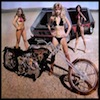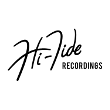kick_the_reverb

Joined: Feb 26, 2006
Posts: 1313
Escondido, CA







|

Posted on Apr 06 2006 11:54 AM
TFJ
Drum volume in the mix: drums have their place in the mix which can differ with a 3-piece vs a 4 or 5 piece band. There is only so much room in each frequency, so drums too loud in a given mix might drown out certain frequencies of the bass or other guitar & I don't think you want the drums covering up or overshadowing the guitar...or maybe you do, depending on the band. That being said, most bands are a democracy, so when mixing a CD with limited time and monetary constraints, compromises have to be made. Its always nice to have an outside ear there to inject some objective input, but that's not always possible. I certainly don't get off on hearing myself play, but do have some opinions about how loud certain things should be in a mix, but I am only one vote. it also depends on how the drums were recorded as well - if everything was isolated, one can boost or cut various elements of the drum kit, but if using fewer mics, you are somewhat limited in what can be adjusted during mixdown. For example, in our first two albums, we utilized more tracks & had a lot more freedom to adjust the snare vs toms vs whole kit, whereas on the latest CD, I think it was just snare on one track and "rest of the kit" on two other tracks (left and right). We miked everything, but directed everything to a finite number of tracks, so we were somewhat limited in that regard. I certainly would have done some things differently, but its all in the history books now - all we can do is learn from what was done and try to improve on it the next time. I think overall, we achieved a better guitar sound at the slight expense of the drum sound.
This is a quote from Jim's response to the surf drumming thread. I wanted to comment and give my opinions on recoding techniques in this forum. Fell free to give your subjective thoughts. Remember that since this forum is new, we're creating a new knowledge base, so even if you said it 10 times on the yahoo groups, feel free to rehash it here again.
TFJ confirmed something I suspected regarding the latest Nebulas album. I had a feeling the album was recorded a little different than their earlier two, and hearing that the drums were mostly pre-mixed explained it.
Now, let me say this first - I'm using this as a platform for general discussion. Don't get the wrong ieda I'm criticizing the new Nebulas album, because I'm not (I like it).
I know all about the challanges pre-mixing presents during mix-down.
Basically, I found out that whenever something was pre-mixed, it usually ended up sounding good by itself, but the final results left something to be desired.
I like a "live" type of sound, which generaly means lots of room mic sound. But, unfortunately, what works for slow songs, with one guitar, doesn't work for fast songs with 2 or 3 guitars with lots of reverb (not to mention additional instruments). I find that in that case, using close mics is a must. Pre-mixing them should be avoided if possible. Why?
because usually what happens, is you end up with a stereo track where the low and mid frequencies of the toms get burried eventhough you thought they sounded way too loud all by themselves.
Some people like to premix just the toms+floor tom - bad idea, now the floor tom would be burried. No more powerful tribal floor tom in your mix buddy.
Micing the hi-hat - don't do it! It's the loudest thing in the kit. If anything, you'll need a way to remove it from the other mics. Instead :
Mic the ride. Yes - I found that using a small diaphragm condenser from beneath (phase reversed, of course) helps have control over how clear it sounds in the overall mix.
Regarding room mics: It's amazing how much a $2,000 Neuman helps to get a good room sound 
Found that out first hand: when recording the Astroglides' 3rd album, we had the "normal" session where the room mics were a couple of ROde (don't know how to do the Norsk/Danish O with a slash through it). The room sound was not very good, and we couldn't use too much of it in the mix.
Then, we had a session of live to 2 tracks, where the studio got a new Neuman. Just one, placed in the same room high up. The difference was night and day, and we could bring up the warm room track high up in the mix, creating a much better sound. Problem is, I don't think any of us guys can afford even one of these (and I would prefer to use 2), but if I could I would rent/borrow a pair and use them as room mics, not only on drums, but on guitars also.
I think the sound (for a surf band) should start with a great stereo room track (mono works too, but stereo offers more "real air" feel, IMHO), and then the individual mics brought up as needed. Of course, the slower the music, the less instruments, and the more balanced the drummer is, you can get away with less close mics.
Opinions?
Ran
— The Scimitars
|
Jon

Joined: Mar 15, 2006
Posts: 1076
Columbus, OH

|

Posted on Apr 06 2006 01:09 PM
The last time I recorded drums, I hung one mic from my ceiling and let it dangle down around the snare area (I'm pretty technical, huh?). It was able to pick up the snare, kick, and ride pretty well, but the toms were a little quiet. If we had had more mics, something better probably would've come of the whole thing. Come to think of it, we never finished those songs.....hmm. Oh well.
|
TFJ

Joined: Mar 04, 2006
Posts: 278



|

Posted on Apr 06 2006 11:08 PM
I don't think it's the number of mics as much as the number of tracks. For the last album, everything was miked, we just had to consolidate everything to a few tracks - given that, we probably could have gotten similar results from fewer mics. On past projects, we would also mike everything...snare top and bottom, overheads, ambient mics, you name it but used more tracks & we wound up not even using the overhead mic tracks - the tom mics seemed to pick up the cymbals more than enough. This time around, everything was miked, but we used fewer tracks- and we were going for a "live" sound - not just for the drums, but we wanted all of the instruments in the same room.
|
kick_the_reverb

Joined: Feb 26, 2006
Posts: 1313
Escondido, CA







|

Posted on Apr 07 2006 12:14 AM
Yes, I meant that the mics should be going on seperate tracks (that's what I meant by not pre-mixing). I don't think 2 snare mics are that important (1 is enough IMO), but I do think that 1 mic for every tom, one for bass, one for ride, 2 over-heads and 2 room mics (each one on a seperate track) are a good foundation and will leave a lot of options for mixing.
All the instruments being recorded at the same time in one room usually sounds kick-ass, but if there mistakes, it's hard to overdub, becasue if the spill-over between the mics.
My ambitious plan for my next recording project is to record the drum tracks with everyone else playing to scratch tracks. Then record each guitar with 3 tracks - 2 room mics put in the same position as they were when the drums recorded, one close mic. Each guitar cab will be placed in the room in the correct physical location in respect to the drums, so the room mics will give the stereo picture, not the panned mono that's usually done. The close mic track will be there as insurance in case the guitar needs more definition.
Who knows what will come out of it. I'm thinking about it becasue I was always disappointed with the results of adding "artificial air" with reverb, panning, etc.
This leaves 1 track for bass (in a 16 track situation), not ideal, but could work.
Ran
— The Scimitars
|
WR

Joined: Feb 27, 2006
Posts: 3832
netherlands




|

Posted on Apr 07 2006 04:15 AM
the paradox is of course, the more mics and tracks you have, the less need for recording expertise, experience, a general sense of knowing wtf you're doing, and a great room with a great room-sound ... in reality obviously, things are reversed, and it's the beginning, not-earning etc musician who has to deal with the least and cheapest equipment.
one advantage of close micing (and than having to add some sort of echo) is that you're less dependent of the room-sound. again, perfect for recording in justy the rehearsalroom, and again, against the natural way it goes.
I'd think two-mic recording 'potentially' gets the best most authentic sound (I only have two ears anyway ....) BUT- it becomes VERY VERY VERY dependent of mic quality and room quality ...
of course, my completly uninformed shot in the dark opinion. feedback from more experienced drummers/recorders mucho appreciated.
WR
— Rules to live by #314:
"When in Italy, if the menu says something's grilled, don't assume it is."
https://www.facebook.com/The-Malbehavers-286429584796173/
|
jhawkdville

Joined: Mar 04, 2006
Posts: 52
Encinitas, CA
|

Posted on Apr 07 2006 05:39 PM
Our Lost Boys' drum sound tends towards the ambient (more room mic than direct) as it sounds more natural with all the reverb'ed guitars.
For surf/instro, it's probably best with the "less is more" approach. I read recently (Recording or EM mag, forget which) about the Earthworks Recording Drumkit System. Using just two overheads and a kick mic (with a special inline pad) you can get great results.
http://www.earthworksaudio.com/29.html
I like this mic kit, but it's a little pricey. If we're lucky, the next studio we book time with will have this Earthworks system in the arsenal. Otherwise, we'll try the "3 mic drum technique" using the best mics in the mic locker.
~ Jonathan
|
kick_the_reverb

Joined: Feb 26, 2006
Posts: 1313
Escondido, CA







|

Posted on Apr 10 2006 09:21 AM
I agree with trying to use the least possible number of mics and tracks, and for using a more ambient sound...if it works without any dropouts of certain drums, than it usually sounds the best for Surf music. But my suggestion for having extra mics on extra tracks is for those situation where you're not sure how the mix will sound. I wasn't saying that you need to start with all the tracks in the mix-down. I would want to start with the overheads and bass drum, or with the room mics, and only bring the close mics tracks up if absolutely needed. But, from past experience, the faster the song, the more instruments, you have a problem of some parts getting burried. This is where having those extra tracks serves as an insurance policy that you won't have to make a too painful compromise (you will have to compromise something, as Jim said, becasue there is just so much audio info competing for the same frequencies). Of course, if you end up using a bunch of mics and record them all pre-mixed to 2 tracks, then all bets are off, you're stuck with what you thought was a good mix, if you played your cards right, it will come out good, and if not, you'll just have to live with it.
This 3 mic kit looks very interesting. Wouldn't we all want to have the budget to experiment with that? Finding a properly equipped recording studio is quite a task.
For a real traditional sound you can try:
http://www.soilsouth.com/
I heard very good things about Mark Neill and his studio. Not a lot of multi-tracking there, so the playing better be on the level of the top notch musicians that recorded there.
Ran
LBOPdot_Net_
Our Lost Boys' drum sound tends towards the ambient (more room mic than direct) as it sounds more natural with all the reverb'ed guitars.
For surf/instro, it's probably best with the "less is more" approach. I read recently (Recording or EM mag, forget which) about the Earthworks Recording Drumkit System. Using just two overheads and a kick mic (with a special inline pad) you can get great results.
http://www.earthworksaudio.com/29.html
I like this mic kit, but it's a little pricey. If we're lucky, the next studio we book time with will have this Earthworks system in the arsenal. Otherwise, we'll try the "3 mic drum technique" using the best mics in the mic locker.
~ Jonathan
— The Scimitars
|
jhawkdville

Joined: Mar 04, 2006
Posts: 52
Encinitas, CA
|

Posted on Apr 10 2006 02:57 PM
kickthe_reverb_
This 3 mic kit looks very interesting. Wouldn't we all want to have the budget to experiment with that? Finding a properly equipped recording studio is quite a task.
For a real traditional sound you can try:
http://www.soilsouth.com/
Thanks for the info, Ran. I was gonna check out Exum Recording in Escondido (closer). Soil Of The South is another potential place for laying down some tracks.
Your "suggestion" for the extra mics is sound...a great strategy. The big boys with the big recording budget generally mic up the drum kit like this:
direct mics: snare (top & bottom) toms, cymbals, kick
room mics (pair)
PZM mics (pair)
overheads (pair)
The clock is ticking in the studio as all this is being set up (more billable hrs for the studio) and the levels for all mics adjusted.
Since we're cheap, small boys, anything to reduce the complexity is good. Call it a "shortcut", but that's the reason why the 3-mic thing sounds good to me. The obvious thing to do with limited cash is use a compromise technique, like perhaps, no PZM, direct mic on top snare, a pair of overheads, kick, and room mic pair.
~ Jonathan
|
kick_the_reverb

Joined: Feb 26, 2006
Posts: 1313
Escondido, CA







|

Posted on Apr 11 2006 08:58 AM
Oh yes...the set-up for drum recording can take more than 4 hours. Very time consuming. Which means - expensive. That's why my band's recordings are going to be done at home, as much as possible.
If you do end up using the fewer mic set-up, I think having the drummer excercise restraint while hitting the snare and the cymbals, then bashing the floor tom and the toms during fills, would help the problem with floor tom dropping out. I would even go ahead and dare to suggest to forget about the snare mic and use that mic for the floor tom - the snare is very loud, the rack toms would get picked up pretty well by the overheads (provided they're played loud enough). It's the floor tom that gets burried (similar to what happens to the bass drum). You might like the sound of the snare like that - just ambient. I think it sounds cool.
One more thing - these are my suggestions based on the many mistakes done on my old band's previous recordings, so please don't go and say "you talk so much about recordings but your work sounds like crap"... I'm not happy with most of the recordings, but I think I was able to understand what was done wrong. I'm not saying that I'll be able to implement all the points I outlined here, but I'm sure as hell gonna try.
Ran
— The Scimitars
|
Thor

Joined: May 21, 2006
Posts: 35


|

Posted on May 29 2006 03:19 AM
I figure I'll throw in my 2 cents:
There's no such thing as the "best" thing for doing a surf recording. For every different style of surf there's a different way of recording it. A good drum sound for a Man or Astro-Man record is completely different than a good drum sound for a Shadowy Men on a Shadowy Planet record, which is completely different than a good drum sound for a Deoras record, which is completely different than a good drum sounds for a Volcanics record. Some people are going to want slick production, some people are going to want character. And then there are going to be people who shoot for one or the other and completely miss both.
Getting away with the good old-fashioned 1 (or 2)-mic garage-rock technique depends heavily on your drummer, his gear, and the mic. The drummer has to rock at dynamics and play everything in proportion (ie - we better hear those drums cutting way the hell through the cymbals). Badly tuned drums will sound like crap.
Tape (15ips) does pleasant things to cymbals.
Using vintage cymbals is pretty crucial as well -- especially on the ride. THey don't make them like they used to. Music today sounds different, and cymbals today are made for music today. Modern cymbals sound very clear and distinct. My opinion is that surf music sounds better with a washier cymbal, one where when hit harder, you hear the difference. Use wood sticks (as opposed to nylon tip).
I've discovered that cymbal bleed into the guitar mic can be a real pain when you want to add compression to the guitar track.
If you're close-micing the kick, shelve off everything above 1k, because unless you're S.P.E.C.T.R.E., the grind/metal/hardcore-surf hybrid sound probably isn't what you're going for.
For the last few Monsters from Mars recordings (Toxic, Driving the Monkey to the Airport), we've done 3 mics: overhead, snare, and kick. This worked pretty well for us. In retrospect some tom mics would have been nice, as the toms are kind of quiet in the mix, but that wasn't an option (as we only have 8 tracks on our reel to reel, and a limited amount of mics). Who knows, it might have only cluttered the sound. We tracked guitars, bass, and drums live with the bass amp in the closet and guitar amp out in the hall.
Here's a tip -- send the snare track to an effects send with stereo reverb patched in, but if possible with your set up, pan the signal you're sending off to a side so that the returning sound doesn't sound like it's coming from the same angle your dry signal is. This will add a big sound to your snare tracks if done right. A little predelay on that reverb can be great too.
I guess that's all I've got -- don't be afraid to experiment. I think we used a MXL990 on overhead ($59 musiciansfriend.com), SM57 on snare, and that shure kick mic on kick. My opinion is that for surf you don't want that big tight kick sound, so don't use an Audix D6 or whatever. Experiment with pulling the kick mic further away from the drum. Does it sound deeper and less pronounced? Good.
— Monsters From Mars
http://monstersfrommars.com
|
norcalhodad

Joined: May 25, 2006
Posts: 537





|

Posted on May 29 2006 11:23 AM
I use a two mic set-up,(SM-57/snare- MXL990/overhead), cuz I only have two inputs to deal with. Something kinda fun I've tried was sticking an extra, rather crappy Radio Shack mic in the tom, and sometimes the kick if I'm doing a more rock-style tune, then running it into my reverb tank, then into my Showman. Both mics pick up the sound so it really helps to get more tom into the mix. I use GarageBand and like to tack on some dynamic processor and a little overdrive too. It sorta tightens and enlivens things up a bit.
Oh ya, I'm not an engineer or drummer so...
—  > > 
|
WoodyJ

Joined: Apr 05, 2006
Posts: 1532
Bethlehem, GA






|

Posted on Jun 26 2006 09:45 PM
I use 2 AKG C1000S overheads and a Shure Beta 52 on the kick drum. Works great.
Sometimes "less is more".
— Jack
aka WoodyJ
The Mariners (1964-68, 1996-2005)
The Hula Hounds (1996-current)
The X-Rays (1997-2004)
The Surge! (2004, 2011-2012)
Various non-surf bands that actually made money (1978-1990)
|
revmike

Joined: Feb 26, 2006
Posts: 3742
North Atlantic








|

Posted on Sep 30 2006 08:37 PM
We're getting ready to record our next CD. Gonna try recording a couple of tracks at home first to see if we can get a drum sound we like. We're thinking about trying the 1 LDC mic technique, 2 mics(LDC mic on the bass drum & one condenser overhead), 3 mics (LDC on bass drum, 2 overheads), and 4 mics (bass drum, snare, 2 overheads) .
I've used 3 and 4 mics, but not the one or 2. (Though we did record an OmOm comp track on Surferstar with one SM57...long story). Any suggestions for the 1 and 2 mic technique?
Thanks,
Mike
— Canadian Surf
http://www.urbansurfkings.com/
|
dwgregory1

Joined: Oct 30, 2006
Posts: 118
Baltimore, MD
|

Posted on Oct 30 2006 10:31 AM
We just finished up a session. I was going to originally mic all drums, and then mix them up with the overheads. I ended up using two overhead tube mics, and then an sm57 on the snare and I forget what was on the kick, some shure kick mic.
I suppose the most important thing that I learned was to start with great sounding drums if at all possible. Tune the drums well so as to bring out all of the neatural resonance, this really helps when relying on overheads. From there you can dampen if need be, with moon gels or anything. It also helps if the drummer is aware of his/her playing in terms of dynamics contributing to the overall drum sound.
my two cents, thanks!
|
revmike

Joined: Feb 26, 2006
Posts: 3742
North Atlantic








|

Posted on Oct 30 2006 02:40 PM
We just finished a couple of sessions using 2 mics on the drums. Both were MXL condensors. The small one was used overhead, centred on the kit, and about 5 feet up. The LDC was placed 4 feet out front, 3 feet off the ground and angled at the bass drum. We're pretty happy with the results so far. The kit actually sounds like one intrument than an assemblage of different parts.
Mike
— Canadian Surf
http://www.urbansurfkings.com/
|
Amyatt1

Joined: Feb 06, 2007
Posts: 2
|

Posted on Feb 07 2007 06:08 PM
Persoanlly, I like 2 LDC overheads, get as much of the kit in that as I can. If its really needed using snare, kick, or toms (i really don't like to mic toms though). 2 Rooms (sometimes just 1). I've only done one surf session so far, but at the next time we do drums, I'd like to try the 3 mic Glyn Johns technique.
|
ArtS

Joined: May 09, 2008
Posts: 1251
Isle of Kent, MD







|

Posted on Apr 09 2021 04:56 PM
Getting ready to work on some new projects. Wondering how people handle drum micing these days. Going over drummer's house with about 7 tracks to use on his kit. I've always found placement is one of the most important aspects of drum/live recordings.
— Surfcat
2023 SG101 Compilation - Tribute to Noel
The Journey Home - Agent Octopus (Our SG101 Comp download)
From Atlantis with Love - Released - July 2023
Agent Octopus-Spotify
Christmas on the Beach - NEW SINGLE Dec 2023!!
Reverb Galaxy - Angle of Attack CD - BANDCAMP
Surf, the most dangerous of all musical genres...
|
xavier_irvine

Joined: Jun 06, 2020
Posts: 13

|

Posted on Oct 15 2023 01:12 AM
Lots of great opinions/ideas in here.
I would just emphasise what some have already mentioned: fewer mics means the drummer needs to able to balance the kit themselves, through their playing, in the room, on the day.
If they hit the cymbals too hard, or hit one drum harder than the others, you'll never be able to pull a great balance from a one or two mic setup.
It really takes an experienced drummer who can play balanced and has enough mental bandwidth to make adjustments when the engineer gives feedback.
https://the-birdcage.bandcamp.com/album/wave-machine
Last edited: Oct 15, 2023 01:13:45
|
![]()






































